Ultrasound guided peripheral intravenous access reviewed

The success of ultrasound-guided peripheral intravenous catheters (USGIVs) has been associated with significant reductions in central venous catheter placement in the emergency department[3] as well as enhanced patient satisfaction” Presley and Isenberg (2018). Excerpt: At least 150 to 200 million peripheral intravenous (PIV) catheters are placed each year in the United States, while up to […]
Emergency department nurses role in establishing intraosseous access

This study aimed to evaluate ED nurses’ success rate in establishing pediatric IO access using semiautomatic devices” Feldman et al (2018). Abstract: BACKGROUND: No study has examined the performance of emergency department (ED) nurses in establishing intraosseous access (IO) access. This study aimed to evaluate ED nurses’ success rate in establishing pediatric IO access using […]
Intraosseous administration of Tissue Plasminogen Activator
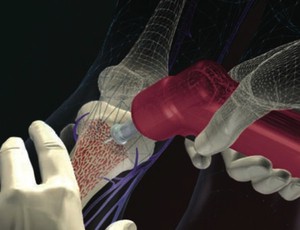
We describe 3 cases in which tPA was administered via IO access on a mobile stroke unit as part of the Benefits of Stroke Treatment Delivered Using a Mobile Stroke Unit Compared to Standard Management by Emergency Medical Services (BEST-MSU) trial” Bowry et al (2018). Abstract: Mobile stroke units offer improved time to administration of […]
Scenario-based simulation health care education on hand hygiene

Our training course had a positive effect on hand hygiene. This study is the first effective scenario-based simulation health care education on hand hygiene and control of health care-associated infection” Nakamura et al (2018). Abstract: BACKGROUND: Simulation health care education is widely used in medical education and has great potential. However, scenario-based simulation health care […]
Support program for outpatients living with PICCs

A multidisciplinary working group met and designed support program for outpatient living with PICC-line” Veyrier et al (2018). Abstract: The peripheral insertion central catheter (PICC-Line) is indicated for long term intravenous medication administration. Some adverse events (AE) might occur, especially for patients after hospital discharge. Therefore, patient empowerment about the side effects and precaution for […]
Difficult removal of a implantable central venous port catheter
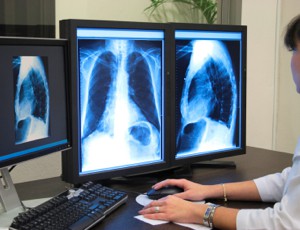
During the operation, avulsion and then dislocation of the port catheter tube occurred—a very rare complication of this procedure” Christ et al (2018). Extract: “A 55-year-old woman presented to the surgery department for the removal of a port catheter system. During the operation, avulsion and then dislocation of the port catheter tube occurred—a very rare […]
Conflicts of interest in research includes developing “closed infusion systems”

We also present several selected case studies that involve (1) the chlorhexidine industry and how it has used marketing trials and key opinion leaders to promote off-label use of its products; (2) the copper industry and how reporting of its trials in IPC have furthered their agenda; (3) the influence of a company developing “closed […]
Peripherally inserted central catheter outcomes placed in the ICU

To quantify variation in use and complications from peripherally inserted central catheters placed in the ICU versus peripherally inserted central catheters placed on the general ward” Govindan et al (2018). Abstract: OBJECTIVES: To quantify variation in use and complications from peripherally inserted central catheters placed in the ICU versus peripherally inserted central catheters placed on […]
Article offers a short history of blood donation origin and purpose
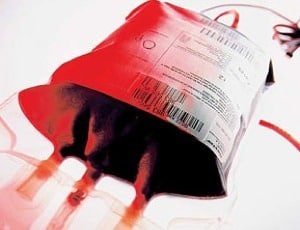
This article will concisely discuss a short history of blood donation origin and purpose, blood testing, donor eligibility and selection, adverse effects of donation, blood donation as a primary medical intervention, and a brief discussion of pathogen reduction and inactivation for donated blood” Myers and Collins (2018). Excerpt: Blood donation is a vital part of […]
Complications associated with vascular access for hemodialysis in the United States
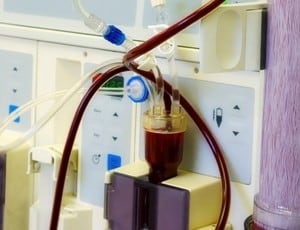
This study examines the utilization and outcomes of vascular access for long-term hemodialysis in the United States and describes the impact of temporizing catheter use on outcomes” Arhuidese et al (2018). Abstract: BACKGROUND: This study examines the utilization and outcomes of vascular access for long-term hemodialysis in the United States and describes the impact of […]
Safety of high-dose intravenous mistletoe therapy in pediatric cancer patients
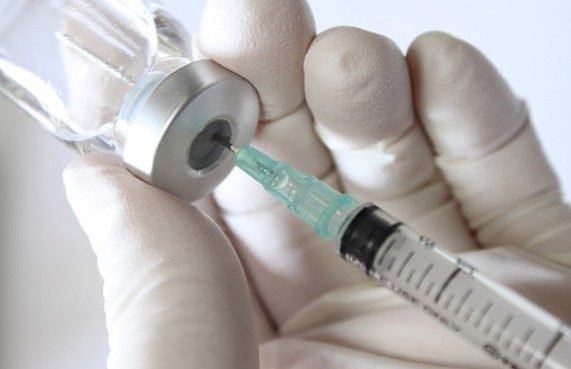
Our study underpinned the safety and feasibility of high-dose mistletoe infusion in children with advanced stages of cancer and showed noteworthy antineoplastic effects, which should be verified in a prospective clinical phase II/III-study” Zuzak et al (2018). Abstract: BACKGROUND: Long-term survival of children with cancer has reached rates of up to 80%. Nevertheless, continued research […]
JLB intravenous catheter designed for patients with difficult peripheral venous access

In patients with difficult peripheral venous access, alternative techniques require expertise and are invasive, expensive, and prone to serious adverse events. This brought us to designing a new venous catheter (JLB® Deltamed, Inc.)” Brugioni et al (2018). Abstract: BACKGROUND: In patients with difficult peripheral venous access, alternative techniques require expertise and are invasive, expensive, and […]
How to improve IV cannulation success in tortuous and valve-rich peripheral veins

Peripheral veins often contain tortuosities and valves that hinder the effective passage of intravenous catheters to the full extent of catheter length. This report describes a methodology termed flick-spin that has proven efficacious for venous catheter passage in tortuous and valve-rich peripheral veins” Lanier (2018). Abstract: Peripheral veins often contain tortuosities and valves that hinder […]
CLABSI rates following the introduction of a central line bundle

In this report, rates of CLABSI and central line utilisation were examined following the introduction of a central line bundle in our Neonatal Intensive Care Unit (NICU) at the Canberra Hospital” Bannatyne et al (2018). Abstract: BACKGROUND: Central Line Associated Bloodstream Infections (CLABSI) constitute a leading cause of morbidity and mortality in neonatal populations. There […]
Hepatitis C virus infection among haemodialysis patients

These results highlight the potential risk of hepatitis C virus transmission from patients within haemodialysis units in Egypt” Ali et al (2018). Abstract: BACKGROUND AND STUDY AIMS: Hepatitis C virus (HCV) infection is a severe problem among patients on maintenance haemodialysis who are at particular risk for blood-borne infections because of prolonged vascular access and […]
Patient empowerment in promoting hand hygiene compliance

Patient empowerment is a component of the World Health Organization’s multimodal strategy to improve hand hygiene (HH). Its successful implementation requires knowledge of the perceptions and attitudes of patients and health care workers (HCWs) toward patient empowerment in HH” Sande-Meijide et al (2018). Abstract: Background: Patient empowerment is a component of the World Health Organization’s […]
Building a team for difficult-vascular access in the emergency department

The implementation of a dedicated difficult venous access team can generate a significant decline in the time needed to obtain IV access for critical diagnostics and medical interventions” Whalen et al (2018). Abstract: Problem: Difficult venous access is a common problem in health care—especially in the emergency setting—that relies on quick diagnostics to differentiate patient […]
Ambulatory IV pump use continues to increase annually
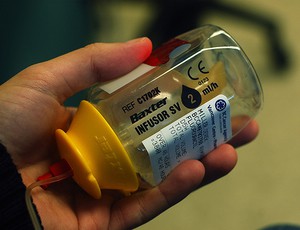
Research suggests that the use of ambulatory pumps is becoming commonplace and with advancing technologies will continue to grow at an annual rate of approximately 9% over the next 5 years” Paparella (2018). Abstract: Before the 1980s, patients were often hospitalized to treat diseases unresponsive to oral medications. Since then, the increasing availability of ambulatory […]
Reducing needle-related pain and distress management in children

Children with intellectual disability despite receiving more relieving techniques during a needle-related procedure experienced more pain and anxiety when compared to healthy children” Pascolo et al (2018). Abstract: Children with intellectual disability frequently undergo needle-related procedures for diagnosis or treatment. Nevertheless, only a few studies deal with pain and distress management during the procedure in […]
Reducing phlebotomy orders with education and changes to IT requests

Recently, this practice has begun receiving attention as a potential target for efforts focused on eliminating overuse. Several organizations have published their efforts in this arena. Interventions have included education, feedback, and changes to computerized provider order entry (CPOE) but have yielded mixed results” Breen et al (2018). Abstract: INTRODUCTION: Daily phlebotomy is often a […]
Fear of needles research in this systematic review and meta-analysis

The aim of this study was to evaluate the prevalence of needle fear and summarize the characteristics of individuals who exhibit this fear” McLenon and Rogers (2018). Abstract: AIMS: The aim of this study was to evaluate the prevalence of needle fear and summarize the characteristics of individuals who exhibit this fear. BACKGROUND: Injections are […]
Review of intravascular catheter-related bloodstream infection

Despite recent gains, intravascular catheter-related bloodstream infection (CRBSI) remains an important clinical problem resulting in significant morbidity, mortality, and excess economic cost” Rupp and Karnatak (2018). Abstract: Despite recent gains, intravascular catheter-related bloodstream infection (CRBSI) remains an important clinical problem resulting in significant morbidity, mortality, and excess economic cost. Successful prevention of CRBSI requires careful […]
Effectiveness and safety of OPAT delivered ertapenem

Ertapenem OPAT was effective and safe. Caregivers in nursing homes should be better trained in OPAT-related procedures” Sanroma et al (2018). Abstract: AIM: To evaluate the effectiveness and safety of ertapenem in patients hospitalized at home. PATIENTS & METHODS: Retrospective analysis of data from Spanish Outpatient Parenteral Antimicrobial Therapy (OPAT) registry. RESULTS: Data from 1428 […]
Hemodialysis central venous catheter malposition into the chest

In this report, we describe the case of a 77-year-old patient on chronic hemodialysis via catheter due to arteriovenous fistula dysfunction. We placed a cuffed-tunneled hemodialysis catheter in the left internal jugular vein. Malpositioning of the catheter led to perforation of the great veins and migration of the catheter tip into the chest” Xie et […]
Review of key medical procedural skills during the early months of internship

The aim of this study was to evaluate the intern preparation package by exploring interns’ self-reported knowledge, confidence, and experience in key procedural skills during the early months of internship” McKenzie and Mellis (2018). Abstract: INTRODUCTION: On commencing internship, new medical graduates (new interns) are often required to perform core procedural skills under differing levels […]
Management of patients on injectable treatments for tuberculosis

Hospital-based care was compared to a community-based approach for patients on TB retreatment in which ‘guardians’ (patient-nominated lay people) were trained to deliver injections to patients at home” Cohen et al (2018). Abstract: BACKGROUND: Patients being treated for recurrent or multidrug-resistant tuberculosis (TB) require long courses of injectable anti-tuberculous agents. In order to maintain strong […]
Nursing students are a vulnerable group at risk of needlestick injury

The aim of this study is to determine the most susceptible job group for needlestick injury (NSI) reported in a newly established teaching medical institute in the Western part of Rajasthan, India” Hada et al (2018). Abstract: BACKGROUND: Occupational exposure to bloodborne pathogen is a significant risk to health-care workers. In any teaching hospital apart […]
Chlorhexidine-coated surgical gloves influence the bacterial flora of hands

Previously, we were able to demonstrate that a novel antimicrobial surgical glove coated chlorhexidine-digluconate as the active ingredient on its inner surface was able to suppress surgeons’ hand flora during operative procedures by a magnitude of 1.7 log10 cfu/mL” Suchomel et al (2018. Abstract: Background: The risk of SSI increases in the presence of foreign […]
Paradigm shift associated with hand hygiene standards

Healthcare-associated infections (HAI) affect hundreds of millions of individuals worldwide. Performing hand hygiene is widely accepted as a key strategy of infection prevention and control (IPC) to prevent HAI, as healthcare workers’ contaminated hands are the vehicle most often implicated in the cross-transmission of pathogens in healthcare” Vermeil et al (2018). Abstract: Healthcare-associated infections (HAI) […]
Double intraosseous access has the potential to augment resuscitation

Double anatomic site IO catheter placement has the potential to augment resuscitation in cases where vascular access is challenging. We sought to compare flow rates and complications among 4 single and double anatomic site transfusion strategies in a swine model of hemorrhagic shock” Sulava et al (2018). Extract: “The American College of Surgeons Advance Trauma […]

